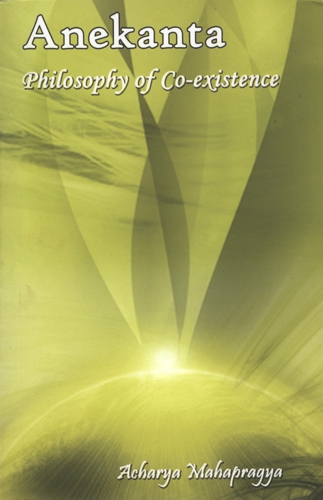True and Untrue
Truth may be explained on the basis of substance. The drauvyansh (part of persistent) of substance is true. It is related to three periods - it existed in the past, exists in the present and will also exist in the future. In the case of persistence there is only truth and nothing is untruth. There is a place for both truth and untruth in the portion of modes of substance. The present mode is true but the past and future modes are untrue. The relativity of this truth and untruth has a great contribution in the development of thoughts.
There are two types of actions in the substance:
- The actions that take place every moment - According to these changes occur every moment eternally. A thing which exists a second ago ceases to do so the next and takes a new shape. This change is called arth paryay (objective mode).
- The other action is one, which takes place veiled behind the moment. This change is termed vyanjan paryay (visible mode).
Arth paryay or objective mode is minute and momentary, while vyanjan paryay or visible mode is apparent and longer lasting. Arth paryay molds substance into a different shape the very next moment. Without change, any substance cannot retain its existence the very next moment. Hence, according to the perspective of philosophy the work done by the arth paryay is extremely important.
Origination, cessation and persistence - the combination of these three awaken the realisation of truth. After analyzing these it is realized that from the perspective of persistence there is no such thing as UNTRUTH. Truth cannot originate from untruth. Untruth can never become truth and vice versa. According to the perspective of origination and cessation the explanation for truth and untruth can only be given in relationship of cause and effect. Whatever is truth in the form of cause and untruth in the form of effect is called truth-untruth karyavad (work-philosophy). The atoms of soil are truth in the form of clay, yet become untruth in the form of pots. After a clay pot is made then the theory of transformation from untruth to truth may be expounded. According to the Jain philosophy, the two alternatives of untruth work-philosophy and truth work-philosophy both are not acceptable. The third alternative of truth-untruth karyavad was accepted. In conclusion it may be said that according to substantial point of view untruth karyavad and truth karyavad both are not acceptable. The rules of cause and effect are applicable only in modes. The modal point of view establishes truth-untruth karyavad by accepting truth from the perspective of cause and untruth from the perspective of effect.
 Acharya Mahaprajna
Acharya Mahaprajna

